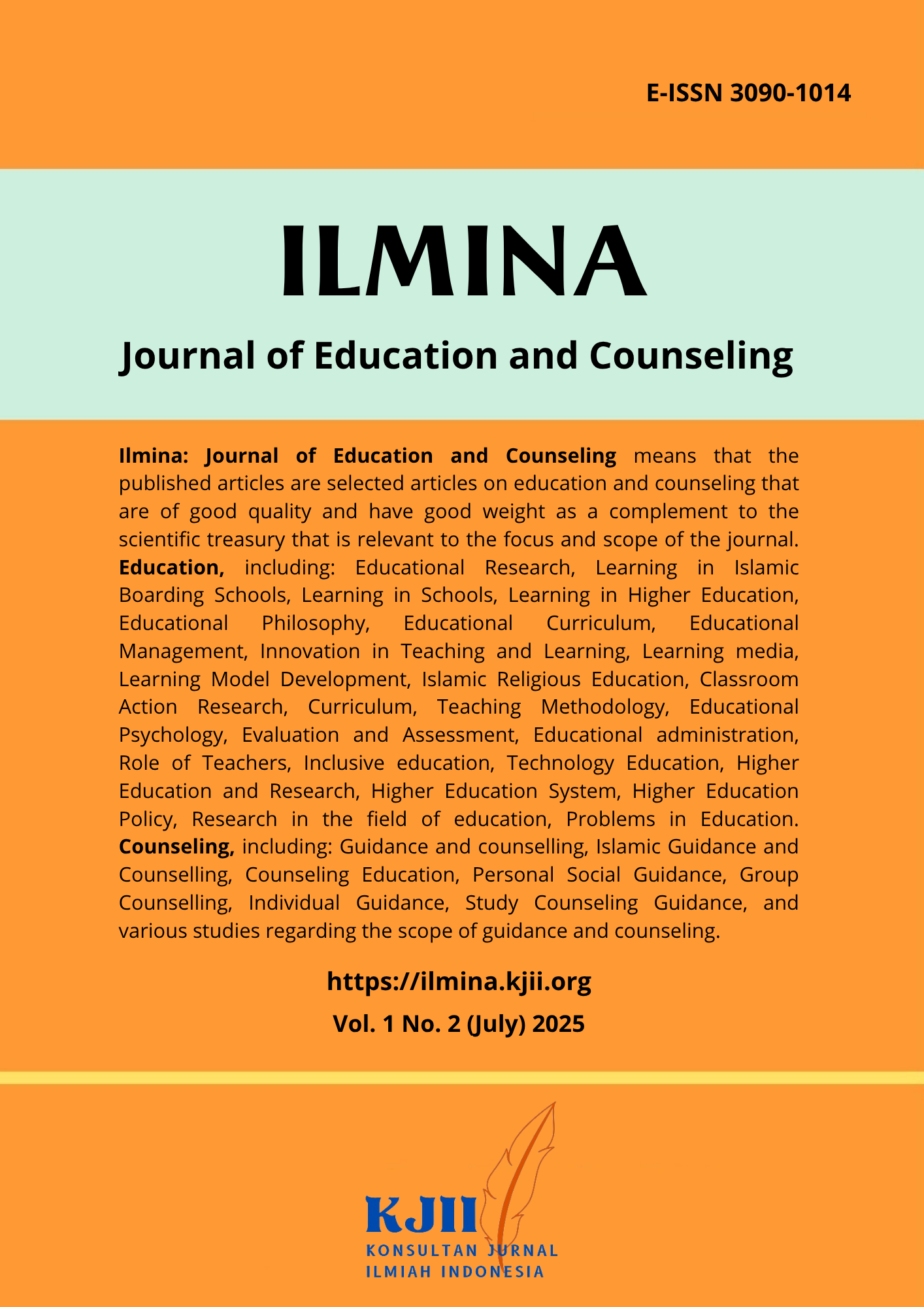E-Learning in the Digital Era: Evolution, Implementation, and Impact on Higher Education in Indonesia
DOI:
https://doi.org/10.63738/ilmina.v1i2.9Keywords:
E-Learning, Online Learning, Higher Education, Industrial Revolution 4.0, Digital TransformationAbstract
The rapid development of information and communication technology has fundamentally transformed the educational landscape, placing e-learning, or electronic-based learning, as a core component. This article analyzes the evolution of e-learning from its initial emergence in the 1960s to its crucial role in the modern digital era, including the Industrial Revolution 4.0 and its impact following the COVID-19 pandemic. This qualitative research examines how e-learning has been implemented at various levels of education, from schools to higher education, and highlights its advantages and disadvantages. Particular focus is placed on a case study of e-learning implementation at Wiralodra University (Unwir). The results demonstrate that e-learning offers flexibility in time and place, access to global resources, cost efficiency, personalized learning, and increased digital literacy. However, challenges such as disparities in technology access, lack of social interaction, limited practical courses, and low digital literacy remain barriers. This article concludes that e-learning is a crucial pillar in future educational transformation, requiring adaptive strategies to maximize its potential and overcome obstacles.
References
Bitzer, D. L. (1962). PLATO: An automated teaching system. University of Illinois. (Note: This reference is likely a very early technical report or internal document, not widely published in standard academic journals. If a more formal publication exists, it would be better to cite that.)
Clark, R. C., & Mayer, R. E. (2003). e-Learning and the Science of Instruction: Proven Guidelines for Consumers and Designers of Multimedia Learning. Pfeiffer.
Clark, R. C., & Mayer, R. E. (2016). E-learning and the Science of Instruction: Proven Guidelines for Consumers and Designers of Multimedia Learning (4th ed.). John Wiley & Sons.
Didik Himmawan, Nesa Fitriyani Hasanah, Dhiah Farah Dhifa, & Fitri Nurul Hidayah. (2025). Analysis of E-Learning Management Development at High School Level. Manajia: Journal of Education and Management, 3(2), 147–159. https://doi.org/10.58355/manajia.v3i2.44
Harasim, L. (1990). Online Education: Perspectives on a New Environment. Praeger Publishers.
Khan, B. H. (1997). Web-based Instruction (WBI): What is it and why is it happening?. Educational Technology Publications.
Kurniawan, D. (2021). Efektivitas E-Learning dalam Pembelajaran Praktik. Jurnal Teknologi Pendidikan, 15(2), 45-60.
Rosenberg, M. J. (2001). E-Learning: Strategies for Delivering Knowledge in the Digital Age. McGraw-Hill.
UNESCO. (2020). COVID-19 Educational Disruption and Response. Retrieved from https://www.unesco.org.
Universitas Wiralodra. (2021a). Prototipe Pengembangan E-Learning di Universitas Wiralodra. Retrieved from https://ejournal.sultanpublisher.com/index.php/abdisultan/article/view/188.
Universitas Wiralodra. (2021b). Pemanfaatan Platform E-Learning Berbasis Cloud Computing di Perguruan Tinggi. Retrieved from https://edum.unwir.ac.id/index.php/edumjournal/article/download/144/125/849.
Universitas Wiralodra. (2021c). Implementasi Pembelajaran melalui Aplikasi Zoom Meeting di Pendidikan Agama Islam. Retrieved from https://islamicpedagogia.faiunwir.ac.id/index.php/pdg/article/view/111.
Universitas Wiralodra. (2021). Evaluasi Hubungan antara E-Learning dan Disposisi Matematika Mahasiswa. Retrieved from https://www.mathline.unwir.ac.id/index.php/Mathline/article/view/198.
Wahyuni, S., Hidayat, T., & Kusumaningrum, D. E. (2020). Kendala dan Peluang E-Learning di Perguruan Tinggi. Jurnal Pendidikan dan Teknologi, 12(3), 67-78.
Yoo, S. J., & Huang, W. (2016). Cloud-based E-learning and Its Educational Benefits. Computers in Education Journal, 23(4), 45-58.
Yuan, L., & Powell, S. (2013). MOOCs and Open Education: Implications for Higher Education. JISC CETIS, 13(4), 30-50.




